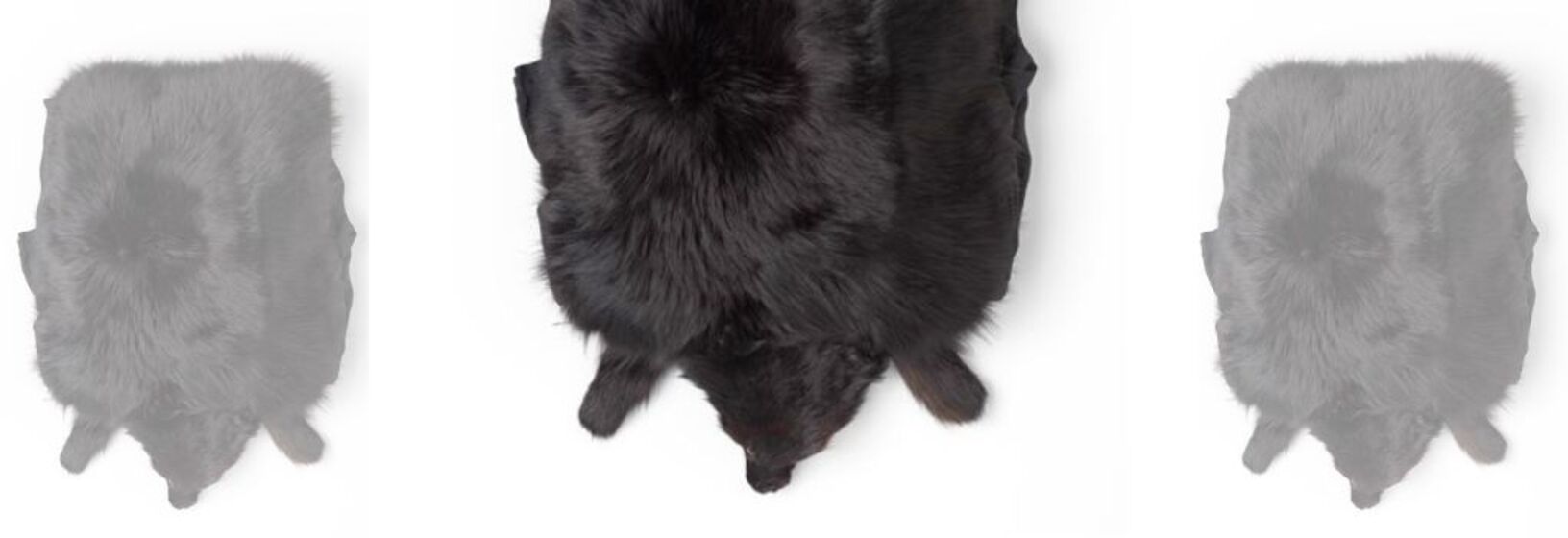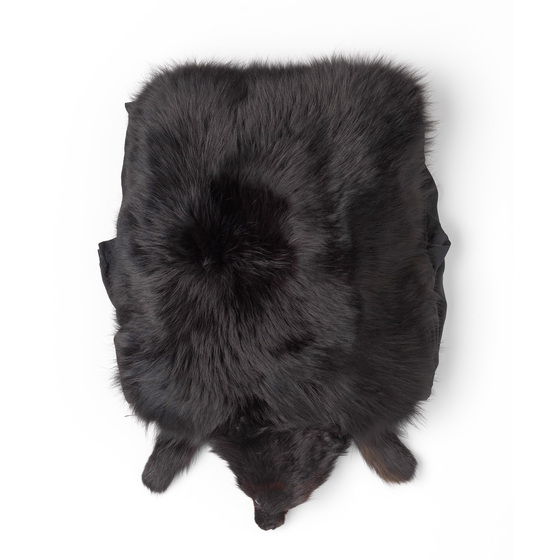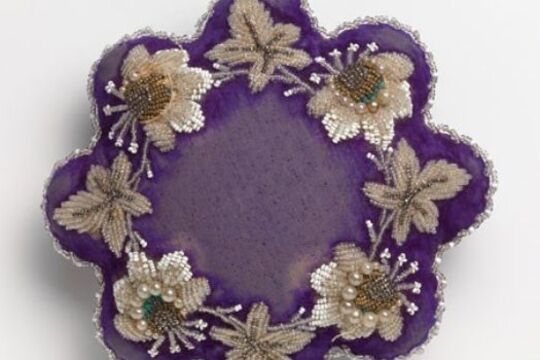The Case of the fraudulent fur
This black fur muff first raised suspicions when it was selected for display. Mink-like in appearance, the uniformity of the colour of the pelt and strangeness of its facial features necessitated closer investigation.
Beginning with visual observation and then x-radiography to study the structure of the muff, NGV Textile conservator Kate Douglas quickly identified the fur as a complete construction. X-rays revealed stitched seams between all pieces showing the ‘body’ to be comprised of three sections with separately attached seamed tubes for the paws and ears.
The head was shown to contain a disc, perhaps of cardboard, and two glass eyes wired together, the paws are tubes of seamed fur, unfinished at the ends, and the nose and false ears are stitched approximations.
The mystery then became, what animal’s fur had been used to make the muff? In the early twentieth century as valuable furs became scarce, dying common and more easily obtainable animal skins became accepted industry practice. Some of the most popular substitutes were fox, rabbit and muskrat.
Analysing the micro-morphology of the fur fibres using a compound microscope and Scanning Electron Microscope (SEM), Kate discovered three distinct types of fur. Scale casts were then made which, when viewed at high magnification, established a match for fox but not for mink. Further advice from expert biologist Barbara Triggs confirmed the pelt as a species of fox with 90% and that the fur had been heavily dyed. The latter point interfering with Triggs’s ability to identify the fibres with 100% certainty.













